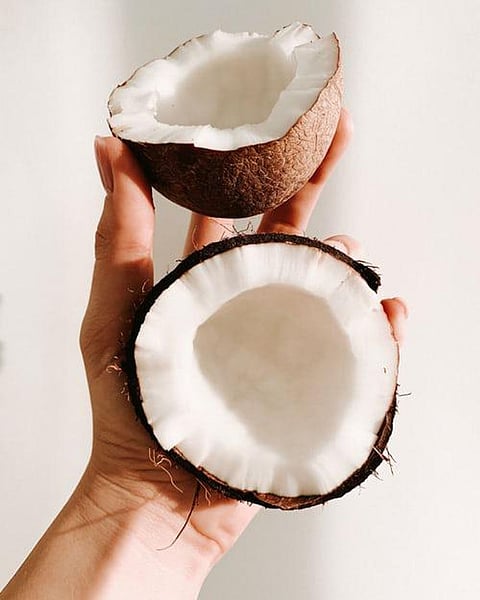
- Home
- न्यूजग्राम
- India
- World
- Politics
- Entertainment
- Culture
- Lifestyle
- Economy
- Sports
- Sp. Coverage
- Misc.
- NewsGram Exclusive
- Jobs / Internships

By Renata Nathania
If one were to stand on an elevated platform anywhere in South India, and look around, one will find at least a dozen coconut trees. Most houses, lakesides, and greenbelts have at least the odd coconut tree standing tall among others. In India, the coconut tree has more than just agricultural value. It is part of ceremonies, religious occasions, and even health. Coconut is more of a flavor in the coastal regions than in the Deccan Plateau, but its usefulness is not disputed in any way.
The coconut is known by many names, tengai (honey fruit), nariyal (water containing fruit), and shriphal (fruit of prosperity). The coconut tree is called kalpavriksha, (tree of blessings) because every part of it is used. The coconut is a drupe, which describes all stone fruits. Coconuts have no seeds, and a hard outer shell covered in husk. The white flesh of the nut is soft and sweet, and flavors a large part of South Indian cuisine.
In the religious sphere, coconuts are an important part of many Hindu rituals and ceremonies. Placed on leaves in a pot that bears the swastika symbol, the coconut represents immortality and divinity. When it is placed in the lap of a new mother, it is a pronouncement of blessing upon her children. In government institutions, the coconut represents the pursuit of knowledge, and is a common motif associated with scholarship. The earliest forms of worship involved animal sacrifice, but over time, the coconut replaced it. People break coconuts before deities to fulfil their vows, or to express gratitude.
Extracts of coconut: coconut powder, flesh, and milkUnsplash
Coconut shells are used in handcrafts and art. Many shapes are carved out of them, and they even work as sustainable utensils. The husk is used to spin coir which is stuffed in mattresses. In tourist locations, the husk is collected and spun into bird nests, a popular souvenir found in many houses. The inner flesh is used to season almost any dish, and the oil that is obtained from cold-pressing the coconut meat, is used for widely in cooking, cosmetics, and Ayurveda. The tree is the most resistant to insects, and its wood is therefore used to build rafters. The leaves and fibers are used to make ropes, and brooms.
Coconut milk is famously used in curries, and goes well with any ingredient. Seafood like fish, prawns, and crab are cooked in coconut milk. Sliced coconuts or grated flesh is added to season meat and vegetables. Tender coconut water, or coconut water is drunk regularly to beat the heat. It contains electrolytes and vitamins that improve immunity and aid in preventing heat strokes. Sometimes, the fresh water is also used in cooking, to add a richer coconut flavor.
In Kerala, the coconut has high economic value. It is used as a collateral for loans, and sometimes debts are even paid off with coconuts. Each Malayali house usually has at least two coconut trees in urban areas. In rural towns and villages, vast courtyards lined with coconut trees surround each house. Coconuts also serve as an important symbol of life and death. When a person dies, a coconut is placed near their head. After they are cremated, the remains are buried, and in its place a coconut tree is planted. This is one of the reasons for so many coconut trees in Kerala.
Keywords: Coconut, South India, Cuisine, Significance
